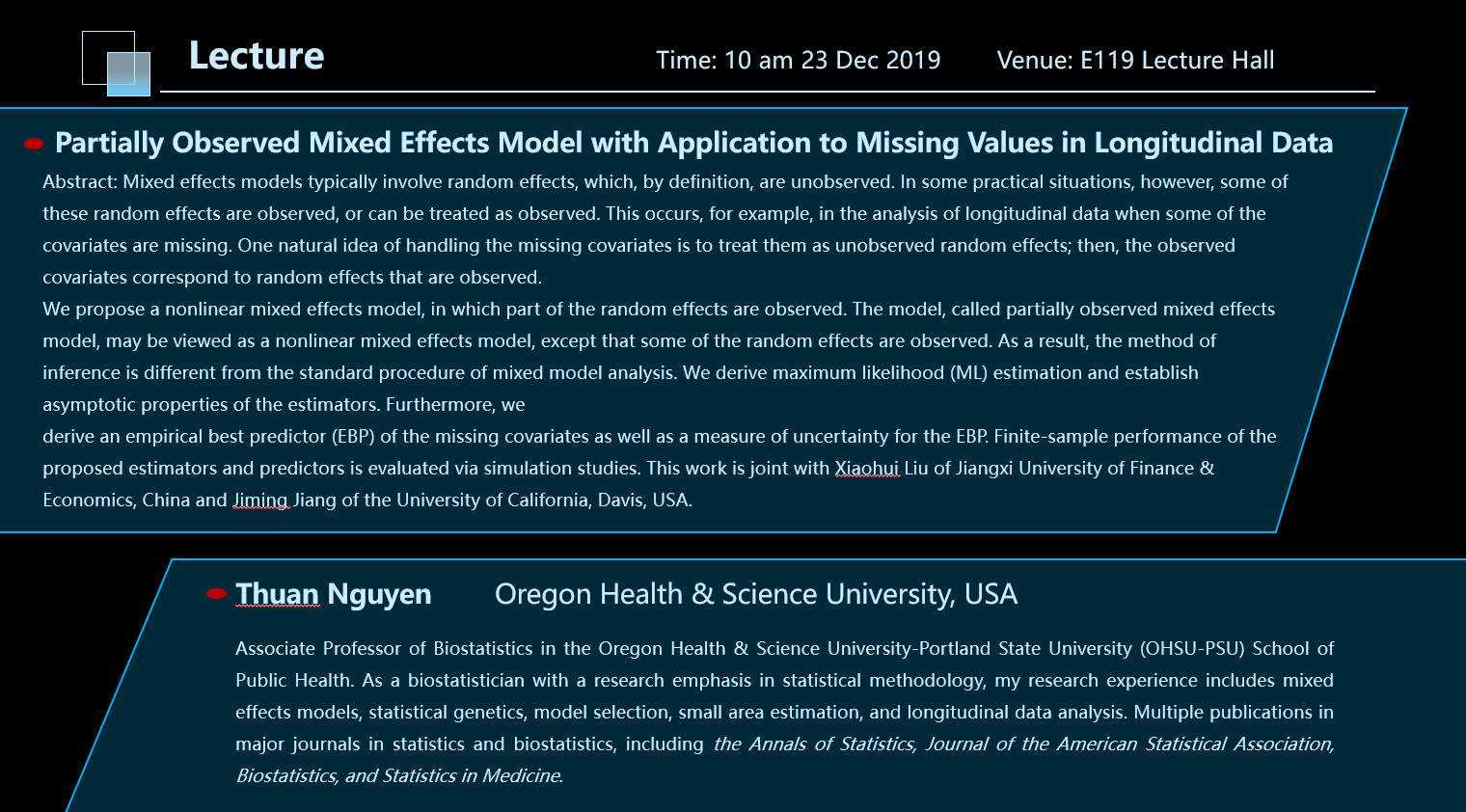
Partially Observed Mixed Effects Model with Application to Missing Values in Longitudinal Data
Thuan Nguyen
Oregon Health & Science University, USA
Abstract
Mixed effects models typically involve random effects, which, by definition, are unobserved. In some practical situations, however, some of these random effects are observed, or can be treated as observed. This occurs, for example, in the analysis of longitudinal data when some of the covariates are missing. One natural idea of handling the missing covariates is to treat them as unobserved random effects; then, the observed covariates correspond to random effects that are observed. We propose a nonlinear mixed effects model, in which part of the random effects are observed. The model, called partially observed mixed effects model, may be viewed as a nonlinear mixed effects model, except that some of the random effects are observed. As a result, the method of inference is different from the standard procedure of mixed model analysis. We derive maximum likelihood (ML) estimation and establish asymptotic properties of the estimators. Furthermore, we derive an empirical best predictor (EBP) of the missing covariates as well as a measure of uncertainty for the EBP. Finite-sample performance of the proposed estimators and predictors is evaluated via simulation studies. This work is joint with Xiaohui Liu of Jiangxi University of Finance & Economics, China and Jiming Jiang of the University of California, Davis, USA.
Reporter Biography:
Nguyen is an Associate Professor of Biostatistics in the Oregon Health & Science University-Portland State University (OHSU-PSU) School of Public Health. As a biostatistician with a research emphasis in statistical methodology, her research experience includes mixed effects models, statistical genetics, model selection, small area estimation, and longitudinal data analysis. She has multiple publications in major journals in statistics and biostatistics, including the Annals of Statistics, Journal of the American Statistical Association, Biostatistics, and Statistics in Medicine. She has been involved with Biostatistics Design Program and Oregon Clinical Translational Research Institute since 2008. She has collaborated with many investigators on a wide range of research projects in clinical care, public health, health policy, basic science, social behavior science. Through these collaborative studies, She is a co-author on more than sixty peer-reviewed publications. She has also coauthored a monograph on a class of statistical model selection strategies, entitled “The Fence Methods ”, published in the section Advanced Series on Statistical Science and Applied Probability, World Scientific Publishing Co. (2016). She is excited to have an opportunity to provide statistical and computational support on this project, entitled “Disparity Sub Typing Mixed Models: A Formalization of How to Bridge Disparity Science and Precision Medicine”, jointly working with other PIs of the project, Dr. J. Sunil Rao and Dr. Jiming Jiang.
(Editor in Charge: Lei Hao)